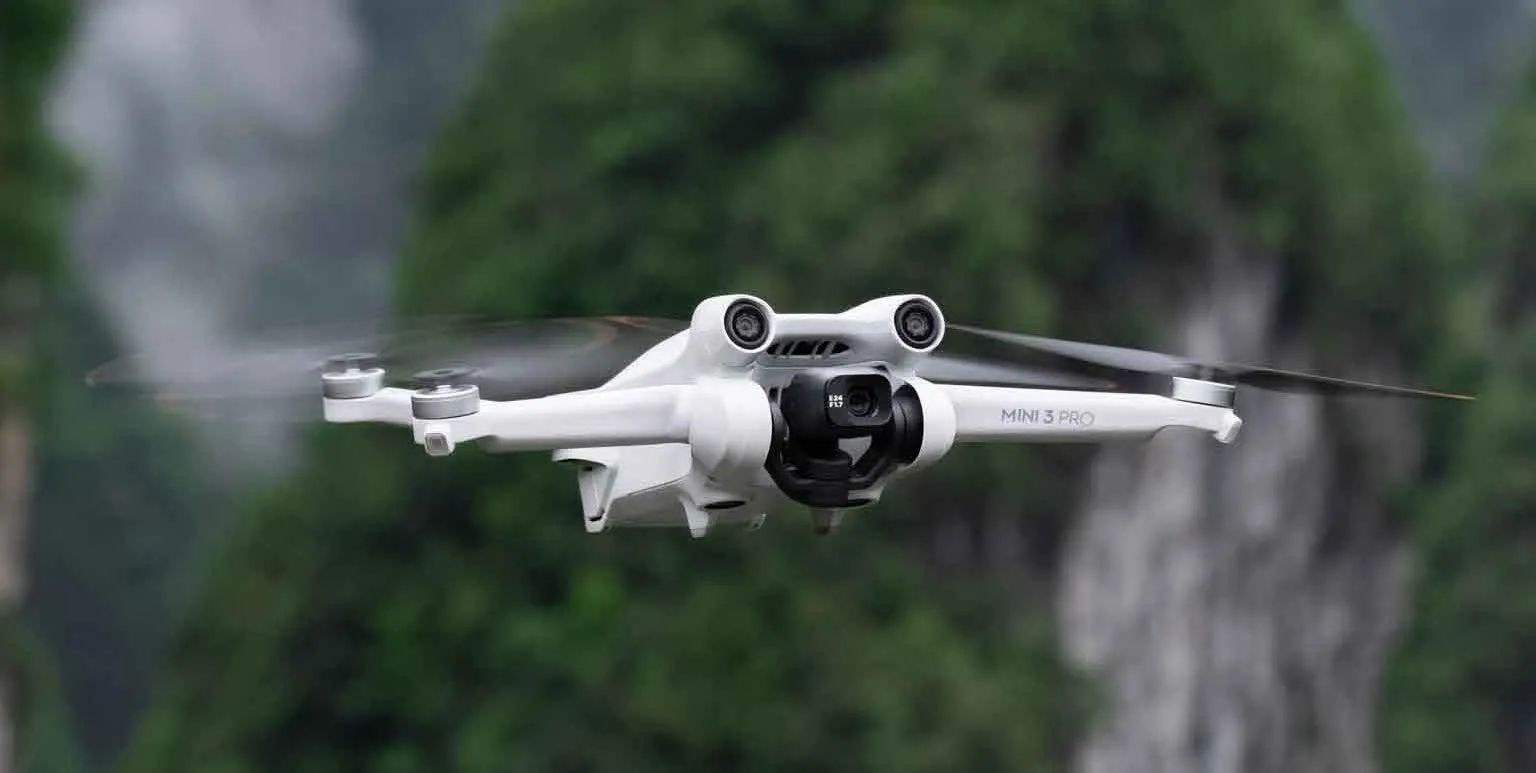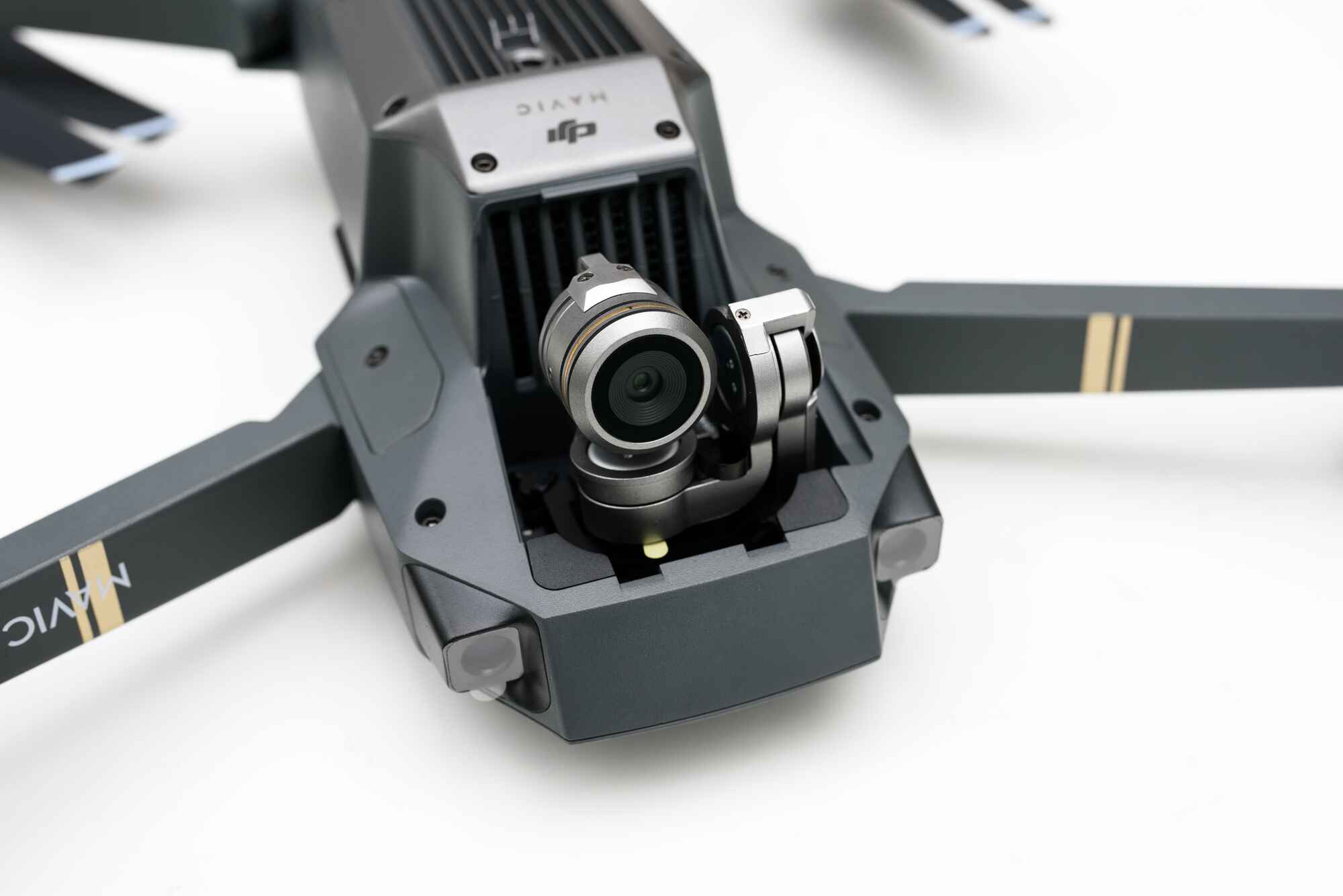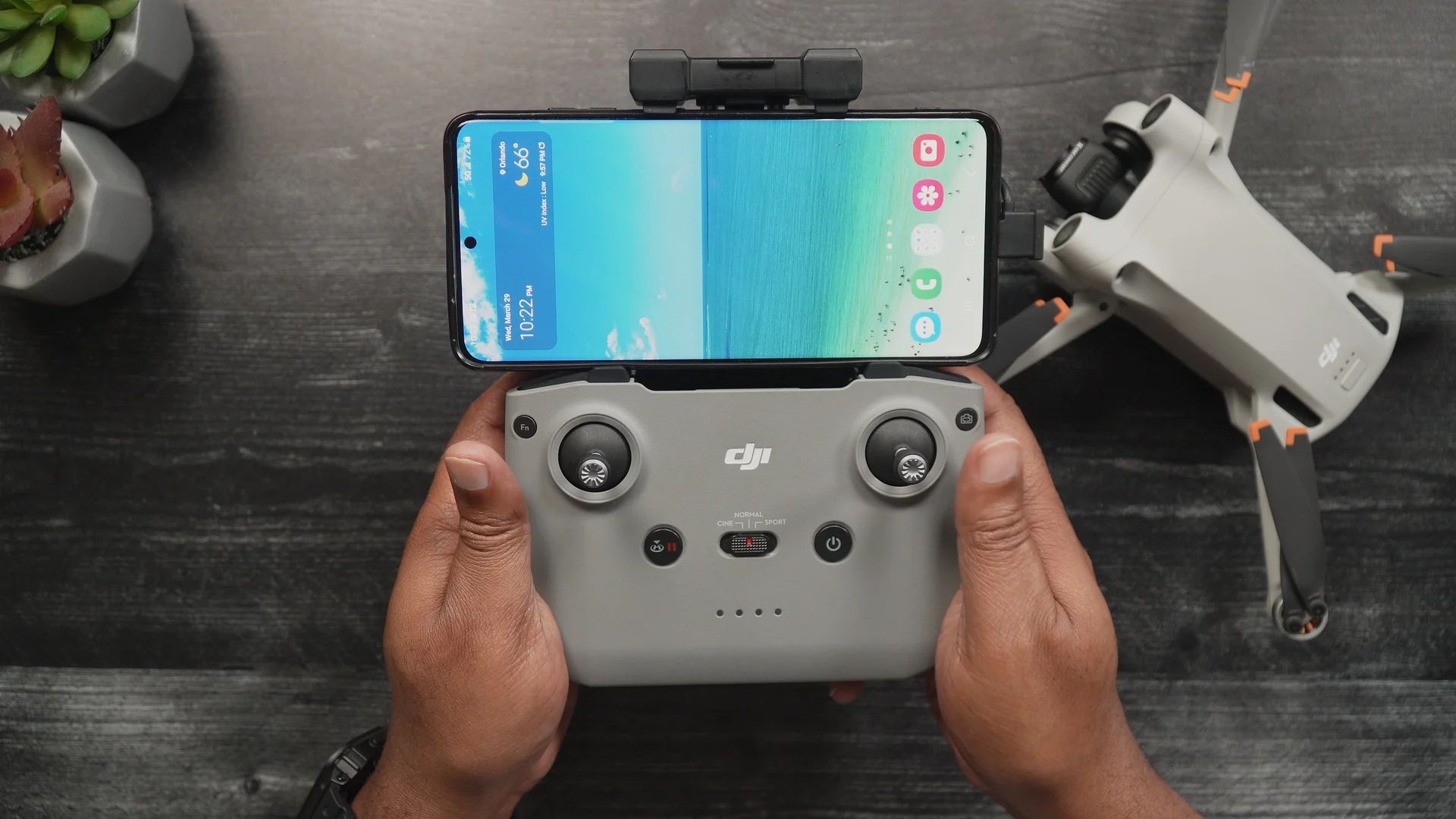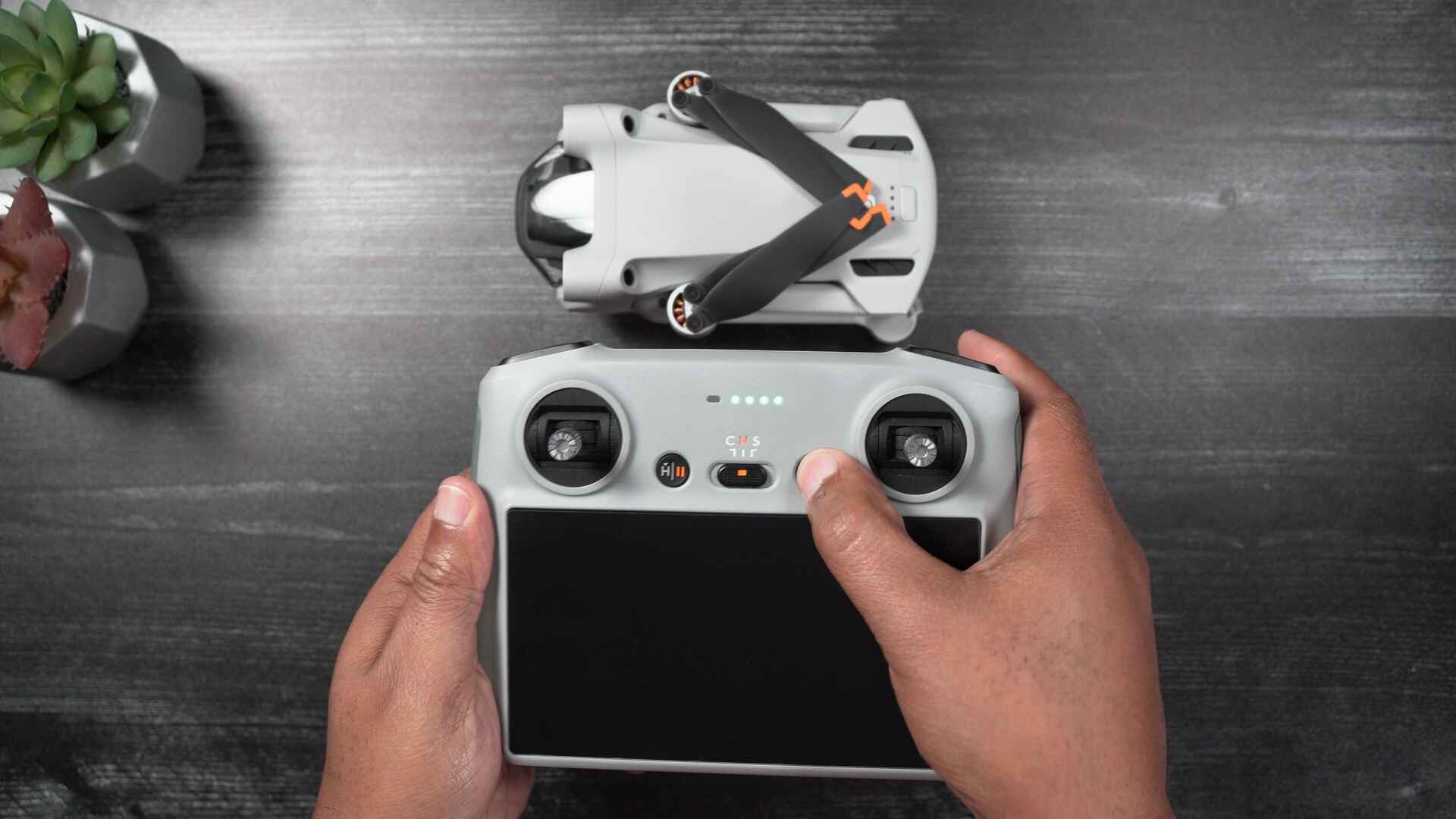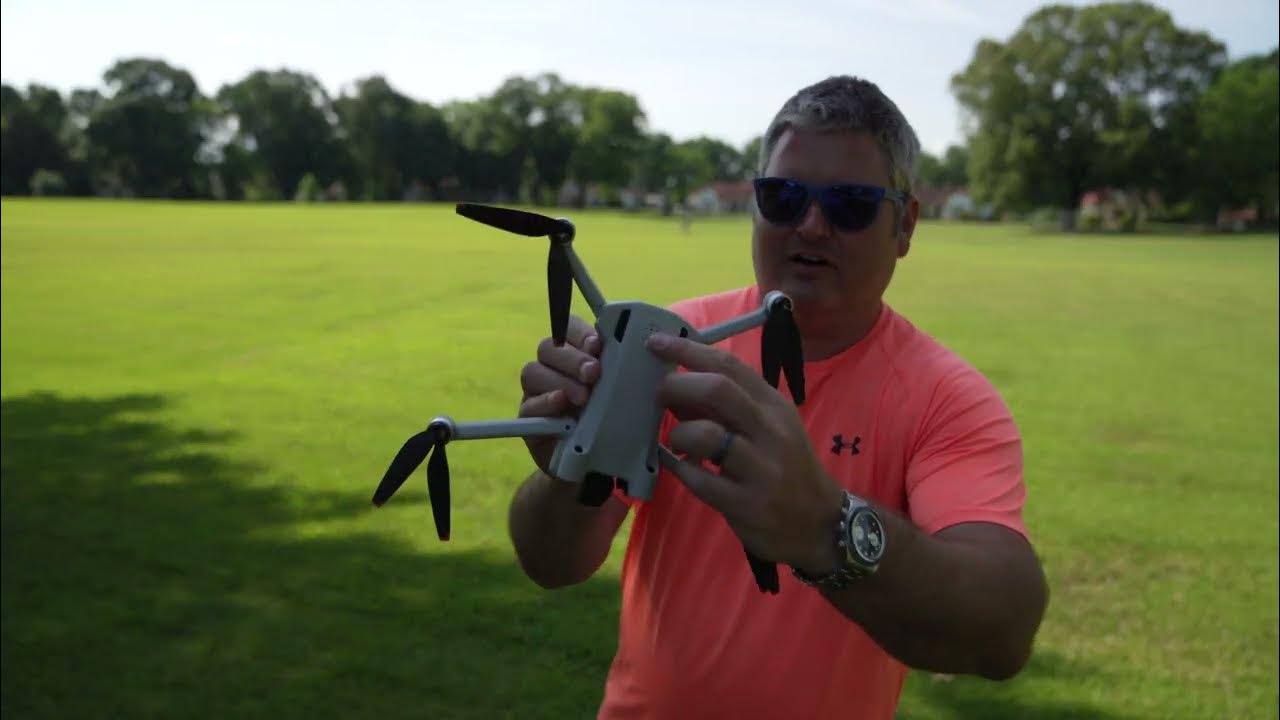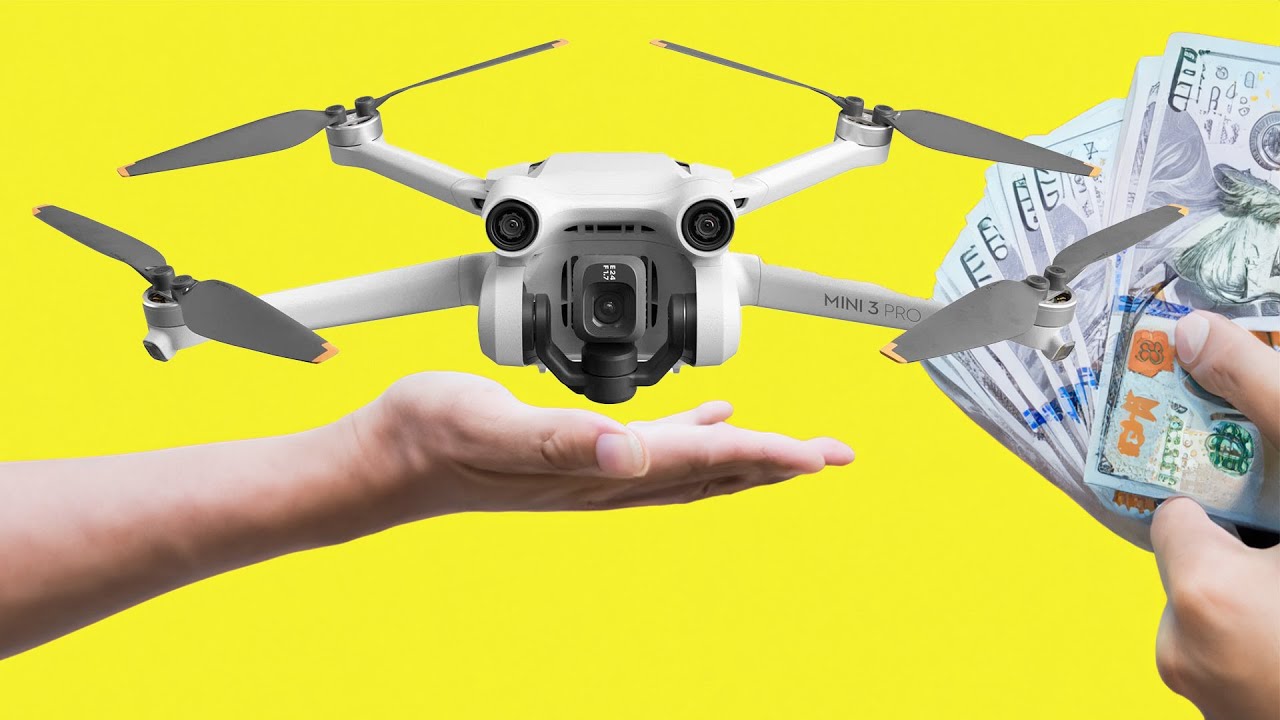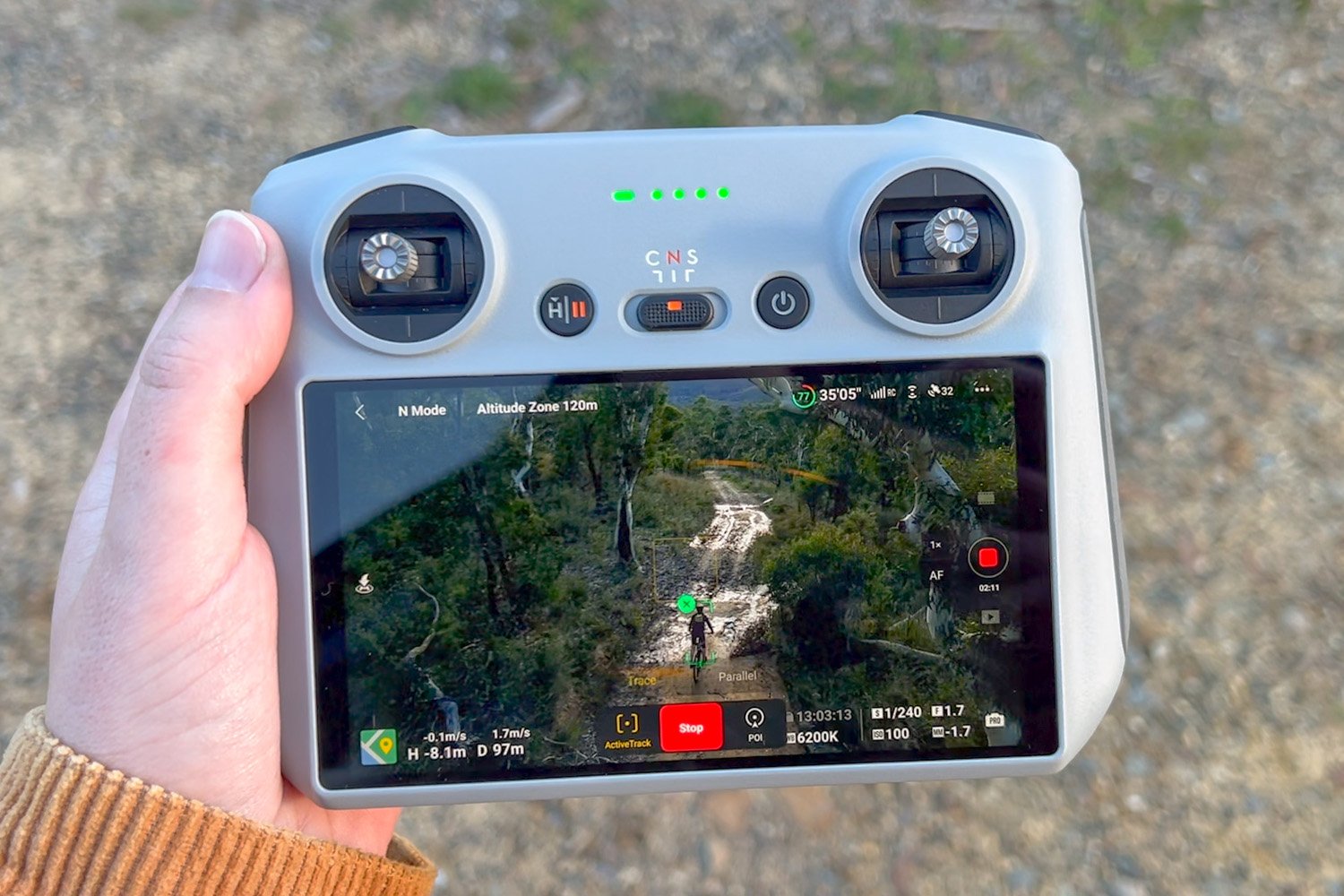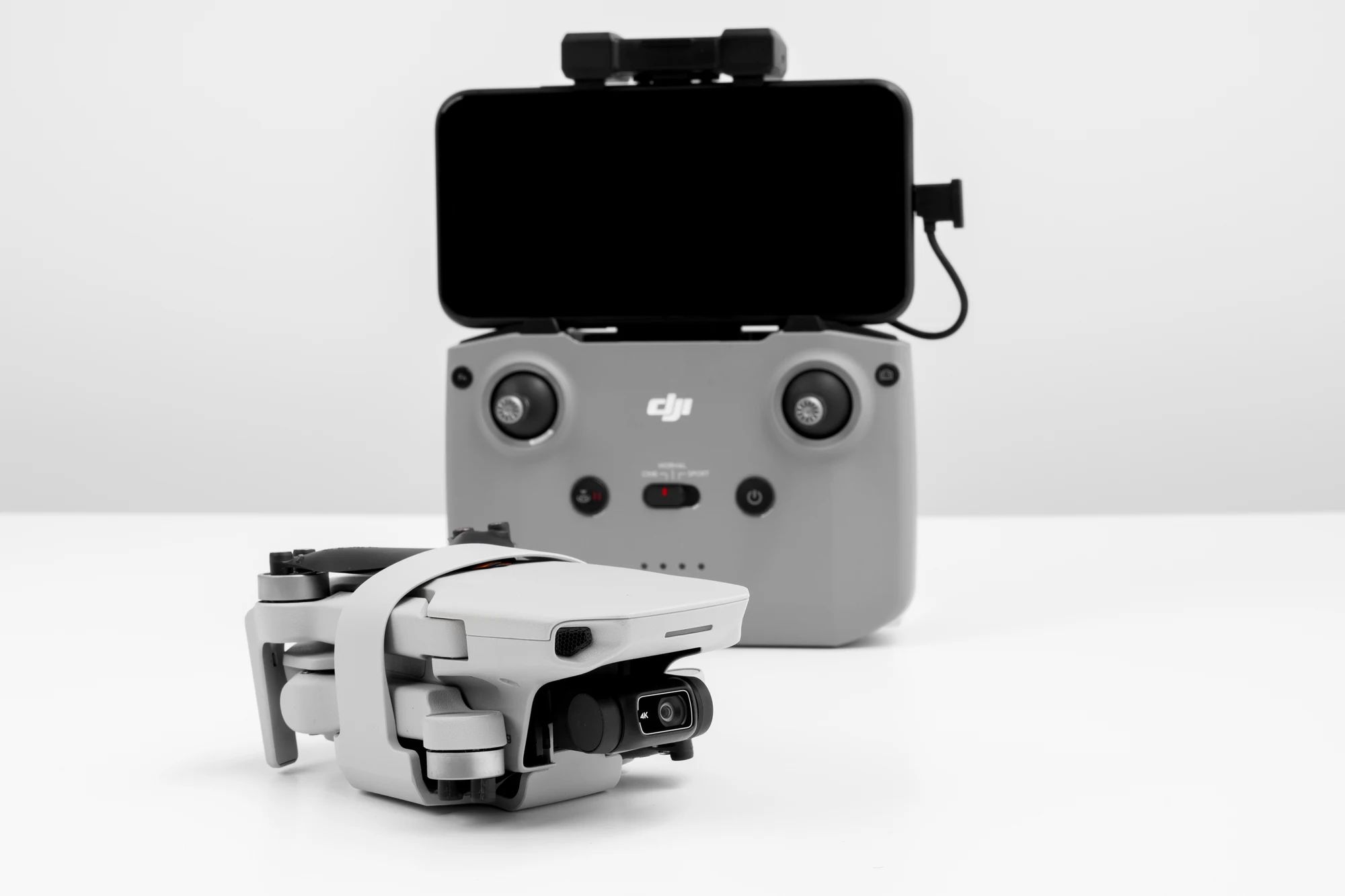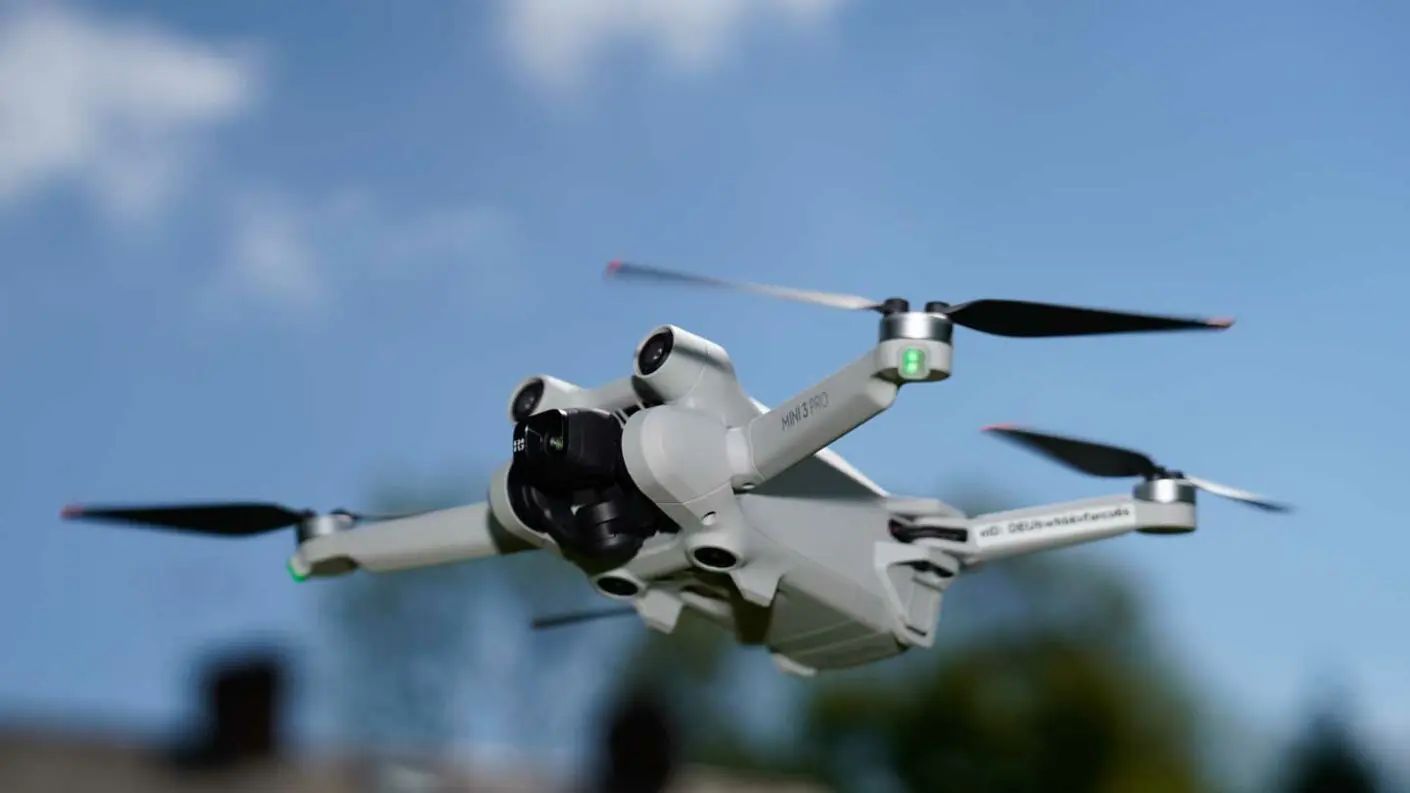Introduction
Welcome to the world of drone flying with the DJI Mini 3 Pro! With its compact size and powerful capabilities, this drone is perfect for both beginners and experienced pilots alike. Whether you are looking to capture breathtaking aerial photos or simply want to explore the skies, the DJI Mini 3 Pro has everything you need.
In this guide, we will take you through the ins and outs of flying the DJI Mini 3 Pro. From unboxing and assembling the drone to capturing stunning aerial shots, we will cover it all. So, let’s get started and embark on an exciting journey into the world of drone piloting.
Before we dive into the technical details, let’s take a moment to appreciate the incredible advancements in drone technology. Drones have revolutionized aerial photography and videography, providing us with a whole new perspective of the world. With the DJI Mini 3 Pro, you have the power to capture stunning shots that were once only possible with expensive professional-grade equipment.
With its lightweight design and foldable arms, the DJI Mini 3 Pro is incredibly portable, making it easy to carry wherever your adventures take you. Despite its small size, this drone packs a punch with its high-quality camera, intelligent flight modes, and precise controls. Whether you’re a hobbyist seeking to explore new heights or a professional looking to elevate your work, the DJI Mini 3 Pro is the perfect choice.
In the following sections, we will guide you through each step of your drone-flying journey. From the initial setup and familiarization with the remote control to mastering advanced flight techniques and capturing stunning aerial footage, we’ve got you covered. By the end of this guide, you’ll be ready to soar through the skies with confidence and creativity.
Now, unbox your DJI Mini 3 Pro and get ready to embark on an exhilarating journey filled with breathtaking views, extraordinary adventures, and the joy of piloting your own drone. Let’s take flight!
Unboxing and assembling the DJI Mini 3 Pro
As you unbox your DJI Mini 3 Pro, you’ll be greeted with a sleek and compact drone that is ready to take flight. Let’s go through the unboxing process and get familiar with the components.
1.1 Box Contents:
Your DJI Mini 3 Pro comes with the following items:
- 1 DJI Mini 3 Pro drone
- 1 remote controller
- 1 intelligent flight battery
- 1 pair of spare propellers
- 1 micro USB cable
- 1 set of spare control sticks
- 1 gimbal protector
- 1 screwdriver
- 1 user manual
1.2 Assembling the Drone:
Before you can take to the skies, you’ll need to assemble your DJI Mini 3 Pro. Follow these simple steps:
- Remove the drone from its packaging and unfold the arms.
- Insert the intelligent flight battery into the battery compartment on the bottom of the drone.
- Attach the propellers by aligning the white dots on the propellers with the dots on the motors. Rotate the propellers clockwise until they are securely fastened.
- Attach the gimbal protector to the camera to ensure its safety during transport.
1.3 Charging the Battery:
Before your first flight, it’s important to ensure that the intelligent flight battery is fully charged. Connect the micro USB cable to the drone and the other end to a power source, such as a computer or a USB wall charger. The LED lights on the battery will indicate the charging progress. Once fully charged, disconnect the cable.
By following these steps, you’ll have your DJI Mini 3 Pro assembled and ready for flight in no time. Remember to consult the user manual for any specific instructions and safety guidelines. In the next section, we will delve into understanding the remote control and its functionalities.
Understanding the remote control
The remote control is an essential component of flying the DJI Mini 3 Pro drone. It allows you to maneuver the drone, control its flight modes, and capture stunning aerial shots. Let’s take a closer look at the different parts of the remote control and their functions.
2.1 Remote Control Layout:
The remote control of the DJI Mini 3 Pro is designed for ease of use and intuitive navigation. Here is a breakdown of its key components:
- Power button: This button is used to power the remote control on and off.
- Control sticks: The left stick controls the altitude and rotation of the drone, while the right stick controls the direction and movement.
- Mode switch: This switch allows you to switch between different flight modes, such as GPS mode and manual mode.
- Camera controls: The camera controls on the remote control enable you to capture photos and videos, adjust camera settings, and access other camera-related functions.
- Flight mode indicators: These LED indicators display the current flight mode of the drone.
- Status indicator: The status indicator provides information about the drone’s battery level, GPS connectivity, and other important notifications.
- Phone holder: The remote control is equipped with a phone holder where you can securely attach your smartphone or tablet.
2.2 Connecting Your Smartphone:
To take full advantage of the DJI Mini 3 Pro’s features, you will need to connect your smartphone to the remote control. Install the DJI Fly app on your smartphone, connect your smartphone to the remote control via the USB cable, and securely place it in the phone holder. The app will provide you with a real-time video feed from the drone’s camera and access to various flight settings and intelligent flight modes.
2.3 Familiarizing Yourself with the Controls:
Take some time to become familiar with the control sticks and buttons on the remote control. Practice navigating the drone in open spaces, gradually increasing your flying skills. Understanding how the controls respond and how the drone moves will ensure a smoother and safer flight experience.
By understanding the layout of the remote control and its functions, as well as practicing with the controls, you’ll be well-prepared to pilot your DJI Mini 3 Pro with confidence. In the next section, we will discuss the pre-flight preparations that are essential for a successful flight.
Pre-flight preparations
Before taking off with your DJI Mini 3 Pro, it’s crucial to perform pre-flight preparations to ensure a safe and smooth flight. These preparations involve checking the drone’s condition, verifying the remote control and smartphone connection, and ensuring compliance with local regulations. Let’s explore the essential steps for a successful pre-flight process.
3.1 Check the drone:
Thoroughly inspect your DJI Mini 3 Pro for any signs of damage or wear. Check the propellers, arms, and camera to ensure they are in proper working condition. Look for any loose connections or debris that could interfere with the drone’s performance. It’s crucial to fly a well-maintained and functional drone to avoid any unexpected issues during flight.
3.2 Verify the remote control and smartphone connection:
Ensure that the remote control and your smartphone or tablet are securely connected. Verify that the DJI Fly app is properly installed and updated on your device. Check that the live video feed from the drone’s camera is visible on your smartphone’s screen. This connection is vital for accessing flight settings, camera controls, and intelligent flight modes.
3.3 Plan the flight route:
Before taking off, plan your flight route by considering the surroundings, weather conditions, and any no-fly zones in your area. Choose an open space away from people, buildings, and obstacles that could interfere with the drone’s flight or pose safety risks. Ensure that the weather conditions, such as wind and precipitation, are suitable for flying the drone.
3.4 Check local regulations:
Research and familiarize yourself with the local regulations and laws regarding drone flights in your area. Understand any restrictions, height limits, or permits required for flying the DJI Mini 3 Pro. Adhering to these regulations is not only important for your own safety but also for maintaining a positive image of responsible drone piloting.
Ensure that the DJI Mini 3 Pro’s battery is fully charged before each flight. The battery level can directly affect the duration and performance of your flight. An adequately charged battery will provide you with ample flight time and a stable performance for capturing stunning aerial photos and videos.
By following these pre-flight preparations, you are setting the foundation for a safe and enjoyable flight experience with your DJI Mini 3 Pro. Performing these checks and adhering to the local regulations will help you avoid potential risks and ensure a successful flight. In the next section, we will explore the DJI Fly app and its functionalities.
Familiarizing yourself with the DJI Fly app
The DJI Fly app is an essential companion for flying the DJI Mini 3 Pro drone. It provides you with access to various flight settings, intelligent flight modes, camera controls, and more. Understanding how to navigate through the app and utilize its functionalities will enhance your drone flying experience. Let’s dive into the features of the DJI Fly app.
4.1 Connecting the app:
Ensure that your smartphone or tablet is connected to the remote control via the USB cable. Once connected, open the DJI Fly app on your device. The app will automatically detect the drone and establish a connection, allowing you to control the drone’s flight and access its features through your smartphone.
4.2 Home screen:
Upon launching the DJI Fly app, you’ll be greeted with the home screen. This screen displays important information, such as the battery level of the drone, GPS signal strength, and available flight modes. It also provides access to additional settings, tutorials, and a record of your flight history.
4.3 Flight settings:
The DJI Fly app allows you to customize various flight settings to suit your preferences and flying conditions. You can adjust parameters such as flight sensitivity, maximum altitude, and control modes. Experiment with these settings to find the optimal configuration that suits your piloting style and the environment in which you’re flying.
4.4 Intelligent flight modes:
The DJI Fly app offers a range of intelligent flight modes that can help you capture stunning aerial shots with ease. These modes include QuickShots, which enable you to create pre-programmed cinematic shots, and ActiveTrack, which allows the drone to track and follow a subject of your choice. Take some time to explore these modes and understand their functionalities, as they can greatly enhance your creativity and the quality of your footage.
4.5 Camera controls:
The app also provides access to various camera settings and controls. You can adjust parameters such as ISO, shutter speed, and white balance to customize the look of your photos and videos. Additionally, you can capture images in different shooting modes, such as Single Shot, Burst Mode, and AEB (Auto Exposure Bracketing), to broaden your possibilities for creative expression.
By familiarizing yourself with the features and functionalities of the DJI Fly app, you will unlock the full potential of your DJI Mini 3 Pro drone. Take the time to explore each setting and mode, experiment with different configurations, and practice using them to capture incredible aerial shots. In the next section, we will delve into the basic flight controls and maneuvers.
Basic flight controls and maneuvers
Mastering the basic flight controls and maneuvers is essential for piloting the DJI Mini 3 Pro drone with precision and confidence. In this section, we will explore the fundamental controls and maneuvers that will allow you to navigate the skies with ease.
5.1 Takeoff and landing:
To take off, ensure that the drone is in a clear and open space. Hold down the takeoff button on the DJI Fly app or remote control, and the drone will ascend to a safe altitude. To land, slowly bring the drone down to the ground and reduce its altitude until it touches down gently. Practice takeoffs and landings in an open area to build your skills and gain confidence.
5.2 Ascending and descending:
To ascend, push the left control stick upward until the drone starts to rise. To descend, push the left control stick downward. Practice ascending and descending at different rates to familiarize yourself with the drone’s vertical movements.
5.3 Forward, backward, left, and right movements:
To move the drone forward, push the right control stick forward. To move backward, pull the right control stick backward. To move left, push the right control stick to the left. To move right, push the right control stick to the right. Experiment with these movements at different speeds to get a feel for the drone’s horizontal navigation.
5.4 Rotating and turning:
To rotate the drone clockwise, push the left control stick to the right. To rotate counterclockwise, push the left control stick to the left. Use these movements to change the drone’s orientation and capture different perspectives during flight.
5.5 Hovering and maintaining altitude:
The DJI Mini 3 Pro is equipped with altitude hold features that allow it to hover in place and maintain a stable altitude. To hover, release the control sticks and the drone will hold its position. Use this feature to take steady aerial photos or videos without any unnecessary movements.
5.6 Practice flight maneuvers:
Once you are comfortable with the basic flight controls, challenge yourself by practicing various flight maneuvers. Try flying the drone in figure-eight patterns, making smooth turns, and flying in different directions to refine your piloting skills and become familiar with the drone’s responsiveness.
Remember to always fly within your visual line of sight and in compliance with local regulations. Regularly practice these basic flight controls and maneuvers to develop your skill set as a drone pilot. In the next section, we will explore the intelligent flight modes that can add an extra dimension to your drone flying experience.
Using intelligent flight modes
The DJI Mini 3 Pro comes equipped with a range of intelligent flight modes that can take your drone flying experience to the next level. These modes allow you to capture cinematic shots, automate flight paths, and unleash your creativity. In this section, we will explore some of the key intelligent flight modes available with the DJI Mini 3 Pro.
6.1 QuickShots:
QuickShots are pre-programmed flight paths that enable you to capture professional-looking aerial shots with just a tap on your smartphone. Choose from modes such as Dronie, Circle, Helix, and Rocket, and the drone will automatically execute the flight path while recording stunning footage. QuickShots are perfect for creating dynamic and cinematic shots without the need for complex piloting skills.
6.2 ActiveTrack:
ActiveTrack allows you to select a subject on your smartphone screen, and the drone will automatically track and follow it. Whether you’re capturing footage of a moving object, such as a cyclist or a car, or simply want to document your own movements, ActiveTrack ensures that the subject remains in the frame while the drone autonomously adjusts its flight path.
6.3 Waypoints:
The Waypoints mode lets you plan a specific flight path by setting waypoints on the map in the DJI Fly app. The drone will then follow this pre-determined route, allowing you to focus on capturing the perfect aerial shots. Waypoints are ideal for creating smooth and consistent videos or exploring scenic locations from a unique perspective.
6.4 Cinematic mode:
Cinematic mode slows down the drone’s movement and reduces its sensitivity to control inputs, resulting in smoother and more cinematic footage. This mode is perfect for capturing slow and elegant shots, such as graceful aerial pans or tracking shots, that add a professional touch to your aerial photography or videography.
6.5 Gesture control:
With the gesture control mode, you can control the DJI Mini 3 Pro using simple hand movements. By gesturing towards the drone, you can capture photos, start or stop recording videos, or make the drone follow you. Gesture control is a fun and intuitive way to interact with the drone and capture creative shots without the need for a remote control.
These are just a few examples of the intelligent flight modes available with the DJI Mini 3 Pro. Explore each mode, experiment with different scenarios, and unleash your creativity. Intelligent flight modes not only make drone flying more accessible but also enable you to capture incredible shots that were once only possible with extensive piloting skills. In the next section, we will discuss techniques for capturing stunning aerial photos and videos.
Capturing stunning aerial photos and videos
The DJI Mini 3 Pro is equipped with a high-quality camera that allows you to capture breathtaking aerial photos and videos. In this section, we will explore some techniques and tips to help you maximize the potential of your drone and capture stunning aerial imagery.
7.1 Composition:
Pay attention to the composition of your shots. Utilize the rule of thirds by placing your subject off-center to create a more balanced and visually appealing composition. Experiment with different angles and perspectives to capture unique and interesting shots.
7.2 Lighting:
Lighting plays a crucial role in photography and videography. Optimal lighting conditions, such as the golden hour (early morning or late afternoon), can dramatically enhance the look and feel of your shots. Experiment with different lighting angles and intensities to capture the mood you desire in your aerial imagery.
7.3 Use ND filters:
Neutral density (ND) filters are essential accessories for drone photography. These filters reduce the amount of light entering the camera, allowing you to control exposure and achieve more balanced and natural-looking shots. ND filters are particularly useful when capturing footage in bright sunlight or during long exposure shots.
7.4 Explore different shooting modes:
The DJI Mini 3 Pro offers various shooting modes, such as Single Shot, Burst Mode, and AEB (Auto Exposure Bracketing). Single Shot captures a single still image, Burst Mode captures a series of images in rapid succession, and AEB captures multiple shots at different exposure levels. Experiment with different shooting modes to create a diverse range of shots and increase your chances of capturing the perfect moment.
7.5 Experiment with camera settings:
Take the time to explore and adjust camera settings such as ISO, shutter speed, white balance, and image format. Understand how each setting affects the final image or video and tailor them according to your creative vision and the specific conditions during your flight.
7.6 Smooth and controlled movements:
When capturing video footage, focus on flying the drone smoothly and maintaining controlled movements. Use slow and steady maneuvers to create cinematic shots and avoid jerky or abrupt movements. Practice different flight techniques to achieve the desired cinematic effect.
Remember, practice makes perfect. Take the time to experiment, learn from your shots, and continually refine your photography and videography skills. The DJI Mini 3 Pro offers ample opportunities to capture stunning aerial imagery, so fly with creativity and explore the world from a new perspective. In the next section, we will provide tips for optimizing flight performance and ensuring safety.
Tips for optimizing flight performance and safety
Optimizing flight performance and ensuring safety are key priorities when flying the DJI Mini 3 Pro. With these tips and guidelines, you can enhance your flight experience and mitigate potential risks.
8.1 Check and update firmware:
Prior to each flight, check for any firmware updates for both the drone and the remote control. Keeping the firmware up to date ensures optimal performance and access to the latest features and improvements from DJI.
8.2 Conduct pre-flight checks:
Perform thorough pre-flight checks by inspecting the drone for any signs of damage, loose connections, or wear and tear. Verify that the propellers are securely fastened and the battery is fully charged. Take the time to also check the weather conditions and ensure they are suitable for safe flight.
8.3 Fly within line of sight:
Always maintain a direct line of sight with the drone during flight. This allows you to monitor the drone’s position, its surroundings, and any potential hazards or obstacles that may come into its path. This is not only a safety requirement but also ensures better control and situational awareness.
8.4 Fly in open spaces:
Choose open areas for flying the DJI Mini 3 Pro. Avoid flying over crowded areas, roads, and restricted airspace. Flying in open spaces reduces the risk of collisions and provides more freedom to explore the drone’s capabilities.
8.5 Beware of wind conditions:
Pay attention to wind conditions before and during your flight. Strong winds can affect the stability and control of the drone. Always fly with caution and avoid flying in excessively windy conditions that may pose challenges to maintaining control and stability.
8.6 Maintain safe distances:
Keep a safe distance from people, animals, buildings, and other objects. This not only ensures the safety of those around you but also helps prevent any potential damage to property or injury from the drone or its propellers.
8.7 Respect privacy:
Always respect privacy when flying your DJI Mini 3 Pro. Avoid capturing footage or flying near private property without permission. It’s important to be mindful of the impact your drone may have on the privacy of others and to act responsibly as a drone pilot.
8.8 Be mindful of battery life:
Monitor the drone’s battery level during flight and ensure that you have enough power for a safe return to home. Avoid pushing the battery too low as it can negatively affect the drone’s performance and potentially lead to a forced landing. Use the DJI Fly app to monitor the battery level and set appropriate return-to-home settings.
By following these tips, you can optimize the flight performance of your DJI Mini 3 Pro while ensuring safety for yourself and those around you. Remember, responsible drone piloting is key to enjoying the full potential of your drone and protecting the reputation of the drone community. In the next section, we will discuss common troubleshooting issues and how to resolve them.
Troubleshooting common issues
While flying the DJI Mini 3 Pro is an exciting experience, you may encounter some common issues along the way. Understanding how to troubleshoot these issues can help you quickly resolve them and get back to enjoying your flight. Let’s explore some common issues and their potential solutions.
9.1 Connection problems:
If you experience connection issues between the drone and the remote control, ensure that both devices are properly charged and within range. Check for any interference from nearby electronic devices or Wi-Fi signals. If the issue persists, try restarting both the drone and the remote control and reconnecting them.
9.2 GPS signal loss:
In areas with poor GPS reception, you may experience a loss of GPS signal on your DJI Mini 3 Pro. To overcome this, ensure that you are in an open area with a clear view of the sky. If the issue persists, recalibrate the drone’s compass and ensure that the firmware is up to date.
9.3 Abnormal flying behavior:
If you notice any abnormal flying behavior, such as the drone drifting or losing stability, perform a quick check of the propellers to ensure they are properly attached and undamaged. Calibrate the IMU (Inertial Measurement Unit) and the compass to ensure accurate flight control. If the issue persists, contact DJI support for further assistance.
9.4 Poor image quality:
If you are experiencing poor image quality, check the camera settings and ensure they are optimized for the lighting conditions. Clean the camera lens to remove any smudges or dirt that may affect image clarity. Consider using ND filters to improve exposure balance and reduce glare. If the issue continues, try updating the firmware or contact DJI support.
9.5 Battery issues:
If you are experiencing battery-related issues, ensure that the battery is properly inserted and securely connected. Verify that it is fully charged before each flight and avoid using the battery until it is completely drained. If the battery level drops significantly faster than usual or the drone fails to maintain flight time, it may be time to replace the battery.
It’s important to consult the DJI Mini 3 Pro’s user manual for specific troubleshooting steps and guidelines. If you encounter an issue that cannot be resolved, reach out to DJI support for professional assistance. Rest assured that with proper troubleshooting, you can resolve most common issues and continue enjoying your DJI Mini 3 Pro flights.
Conclusion
Congratulations on completing this comprehensive guide to flying the DJI Mini 3 Pro! We have covered everything from unboxing and assembling the drone to capturing stunning aerial photos and videos. By now, you should have a solid foundation of knowledge and skills to confidently pilot your DJI Mini 3 Pro and unlock its full potential.
Throughout this guide, we emphasized the importance of safety, responsible piloting, and adherence to local regulations. Always remember to fly within your line of sight, in open spaces away from people and obstacles, and with consideration for privacy and the environment.
We covered the key components of the DJI Mini 3 Pro, including the remote control and the DJI Fly app, which provide you with intuitive controls and access to intelligent flight modes. These features allow you to capture breathtaking aerial shots and explore creative possibilities.
We provided tips for optimizing flight performance, such as conducting pre-flight checks, flying in suitable weather conditions, and being mindful of battery life. By implementing these tips, you can enhance your flight experience and ensure the safety of yourself, others, and your drone.
Furthermore, we explored common troubleshooting issues and their potential solutions. By understanding how to troubleshoot these issues, you can quickly resolve any challenges that may arise during your flights.
Now that you have the knowledge and skills to confidently fly the DJI Mini 3 Pro, it’s time to take to the skies and capture stunning aerial imagery. Experiment with different shooting techniques, explore new flying locations, and let your creativity soar.
Remember that practice makes perfect, and the more you fly your DJI Mini 3 Pro, the more proficient you will become. Continue to refine your piloting skills, experiment with different flight maneuvers, and push the boundaries of what you can achieve with your drone.
Lastly, always stay informed about the latest updates, guidelines, and regulations related to drone flying. This ensures that you are aware of any changes that may impact your flights and allows you to stay up-to-date with best practices for responsible drone piloting.
Now, it’s time for you to spread your wings and embark on an incredible journey with your DJI Mini 3 Pro. So, go out there, explore new horizons, and capture the world from a whole new perspective!







